Article continues below
While driving north along the TransCanada Highway, I was stopped by a moose.
I sat stranded along the stretch of roadway in northern Newfoundland known as the Viking Trail, which leads to L’Anse Aux Meadows National Historic Site , the only authenticated Norse settlement in North America.
As I waited for him to carry on his way, I noticed that the tree branches in the forest lining this section of road all pointed east, angled by the force of the wind blowing inland off the Strait of Belle Isle, the narrow strip of water separating Newfoundland from Labrador.
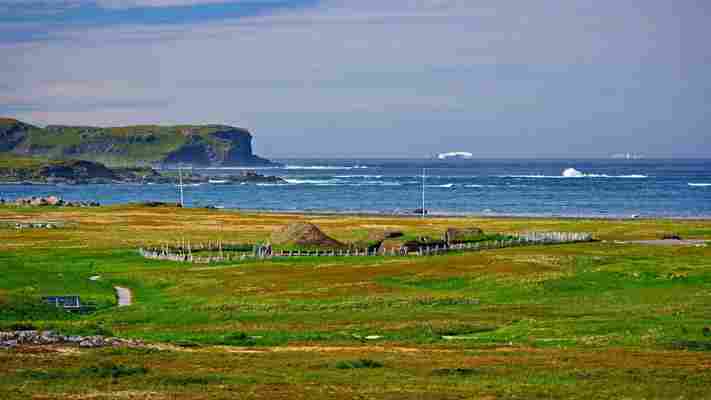
L’Anse Aux Meadows in Newfoundland was the site of the first European settlement in the New World (Credit: Interfoto/Alamy)
Twenty minutes later, I continued on my journey; it was another 80km to L’Anse Aux Meadows National Historic Site. Stepping out of the car, my nostrils filled with the crisp, briny sea air carried in by a breeze that rippled across the grassy landscape.
It is here that a significant moment in human migration and exploration took place
It is here, on the northern tip of Newfoundland, that a significant moment in human migration and exploration took place.
In the year 1000, nearly 500 years before Christopher Columbus set sail, a Viking longboat, skippered by Leif Erikson, brought 90 men and women from Iceland to establish a new settlement – the first European settlement in the New World.
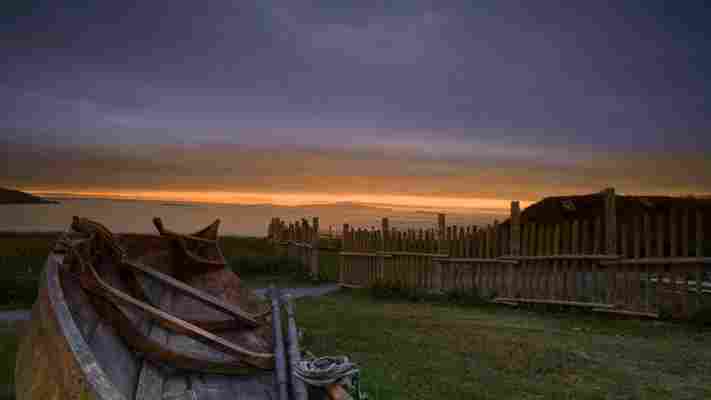
In the year 1000, a Viking longboat captained by Leif Erikson landed near L’Anse Aux Meadows with 90 men and women (Credit: Parks Canada)
Erikson’s party arrived at low tide and found themselves stranded in the misty shallows of what historians believe was Epaves Bay. When the tide returned, they moved further inland, navigating up Black Duck Brook to the place where they would establish their stronghold in their new-found land.
By modern sensibilities, Newfoundland can seem a harsh place, with fierce coastal winds whipping across the remote landscape. But for people who just travelled across the unforgiving North Atlantic in open boats, it would have been perfect. The forests were rich in game; the rivers teemed with salmon larger than the Norse had ever seen; the grasslands provided a bounty of food for livestock; and, in some places, wild grapes grew, prompting the Vikings to name this land 'Vinland'.
The settlement didn’t last long, however; the community abandoned the settlement after less than a decade after repeated clashes with the island’s native tribes, known to the Vikings as ‘Skraelings’.
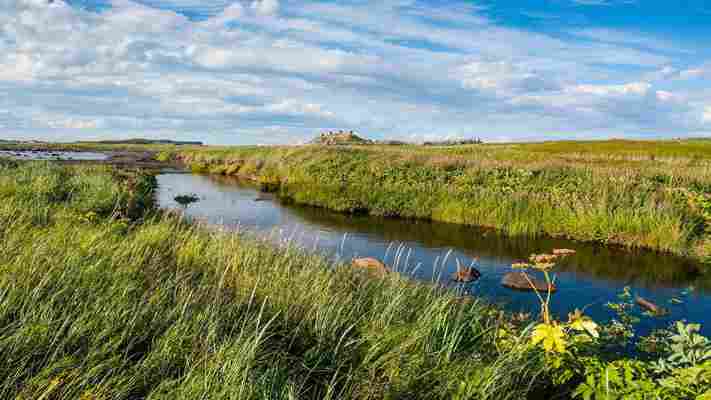
In some places wild grapes grew, prompting the Viking name this area ‘Vinland’ (Credit: Michael Runkel/Alamy)
For more than 100 years, archaeologists in Finland, Denmark and Norway used ancient Norse sagas to guide their search for Erikson’s lost settlement, scouring the coast of North America from Rhode Island to Labrador.
We didn’t know anything about the Vikings being here
In 1960, a husband-and-wife team of Norwegian archaeologists, Helge and Anne Stine Ingstad, heard from locals of L’Anse Aux Meadows – the town for which the site was named – speak of what they believed to be an old Indian camp. The initial excavation of the site’s mysterious seaside mounds revealed a layout similar to longhouses found in confirmed Viking settlements in Iceland and Greenland. Then, the discovery of a 1,000-year-old nail indicated that ship building had taken place here, leading them to believe that they had discovered the long lost Vineland settlement.
“As kids we played on the curious mounds,” said Clayton Colbourne, a former Parks Canada guide at L’Anse Aux Meadows. “We didn’t know anything about the Vikings being here.”
In 1960, two Norwegian archaeologists discovered that what was thought to be an old native village was the Viking settlement (Credit: Parks Canada)
From the entrance of the L’Anse Aux Meadows National Historic Site, a narrow path crosses a landscape that has changed very little over the centuries. Mossy partridgeberry and bakeapple vines cover a boggy shelf along the rocky shoreline. Cow parsnip stands as tall as centuries-old dwarf trees, its clusters of tiny, white flowers blooming at shoulder level. The only noticeable sounds are the cry of seabirds, the rustling of grass in the wind, and the slapping of waves on the pebble-strewn shore. In the shallows, rows of jagged rocks jut out of the calm, clear water like teeth waiting to bite a boat’s bottom.
The path leads to the grassy outlines of the settlement’s original three large lodges and five workshops. Parks Canada has recreated a sod lodge and two more workshops near the original mounds. There, guides and animators dressed as Vikings explain the Norse architecture and lifestyle and demonstrate ancient crafts. The recreated lodge is entered through a Hobbit-high doorway built into 6ft-thick walls. Thanks to the sturdiness of the construction, the winds may howl outside, but inside is silent. If L'Anse Aux Meadows is indeed where Erikson's party settled, it would have been in one of these huts that Erikson’s nephew, Snorri, became the first European baby born in the New World.
Costumed reenactors illustrate Viking life at L’Anse Aux Meadows (Credit: Parks Canada)
Nearly 1,000 years later, this unassuming collection of mounds experienced another first. In 1978, Unesco announced the creation of the now lauded World Heritage List; L’Anse Aux Meadows was the first cultural site in the world to receive Unesco World Heritage status.
L’Anse Aux Meadows was the first cultural site in the world to receive Unesco World Heritage status
I spent two hours at L’Anse Aux Meadows, listening to the costumed reenactors and studying exhibits in the visitors centre. Before I left, I lingered on the shore washed in salty breezes that had travelled thousands of kilometres across the same seas that Erikson and his party did.
Leaving the Viking site was a type of instant, extreme time travel. I drove my rental car south along rocky coast, then inland towards the small St Anthony airport ‒ all the while keeping my eyes out for wandering moose.
Join over three million BBC Travel fans by liking us on Facebook , or follow us on Twitter and Instagram .
If you liked this story, sign up for the weekly bbc.com features newsletter called "If You Only Read 6 Things This Week". A handpicked selection of stories from BBC Future, Earth, Culture, Capital and Travel, delivered to your inbox every Friday.

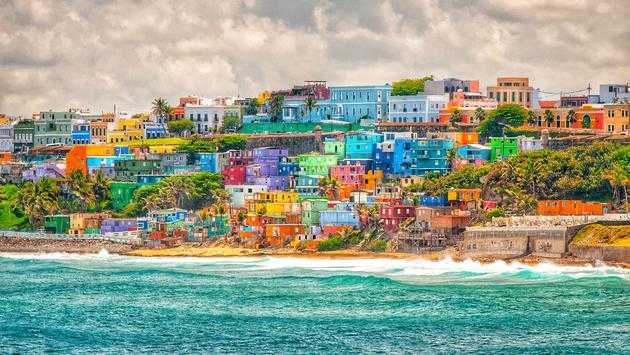

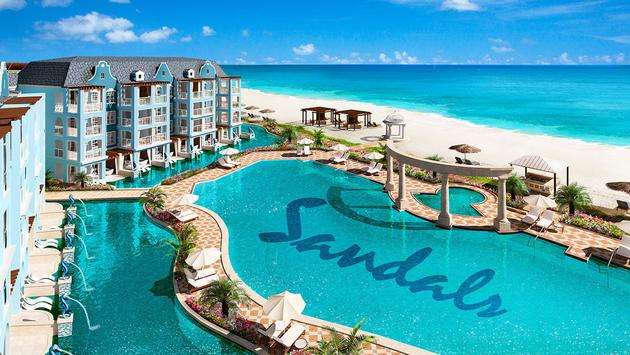
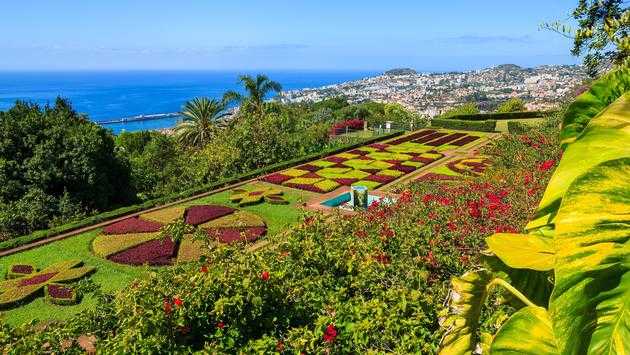

Leave a Comment